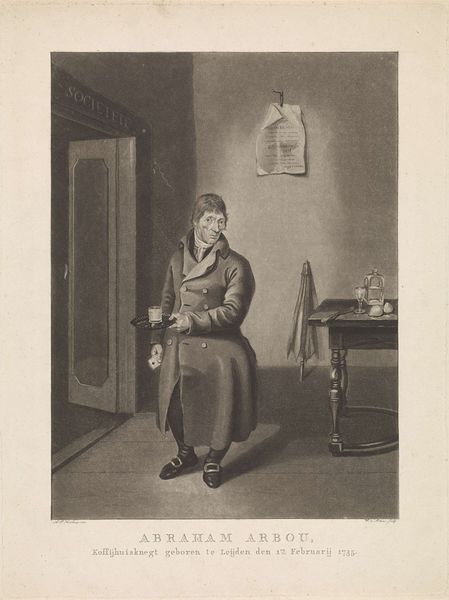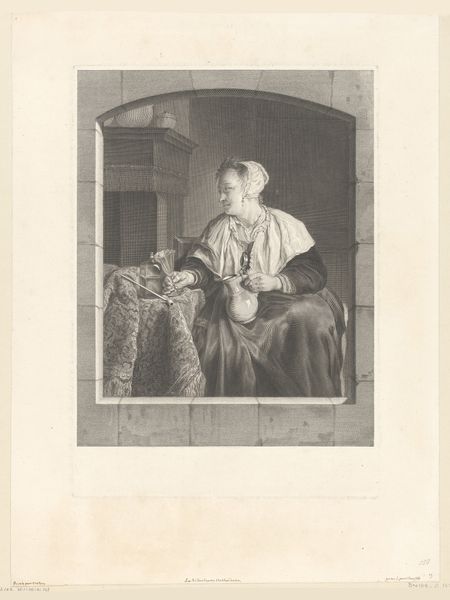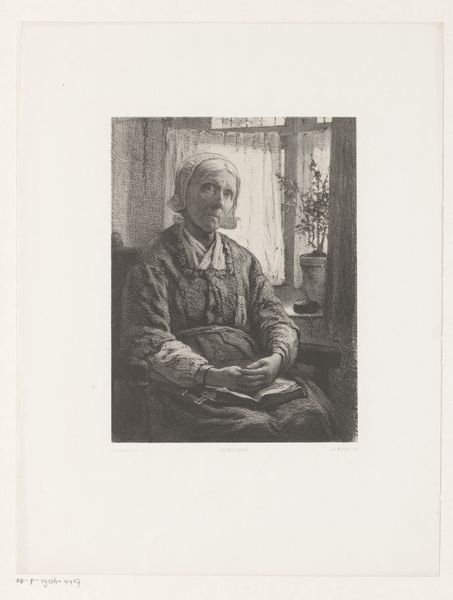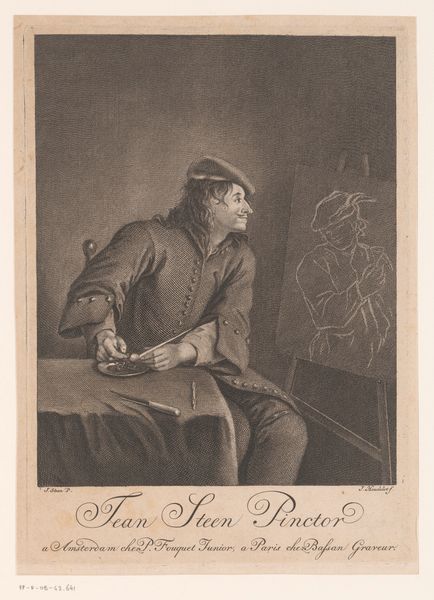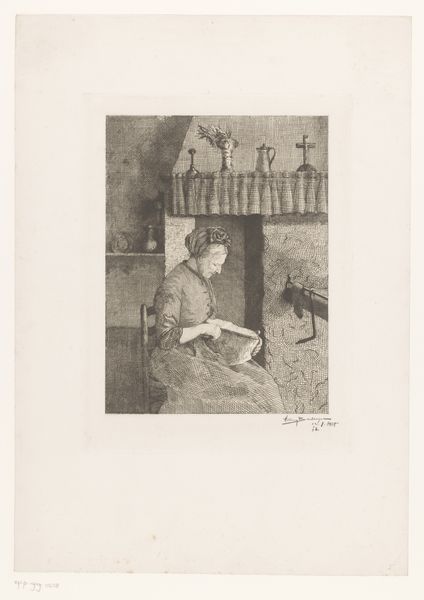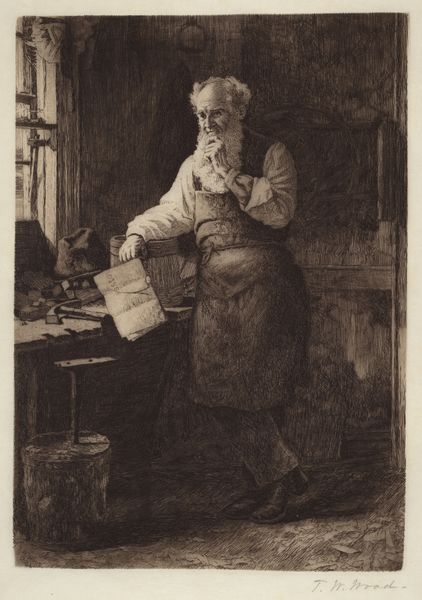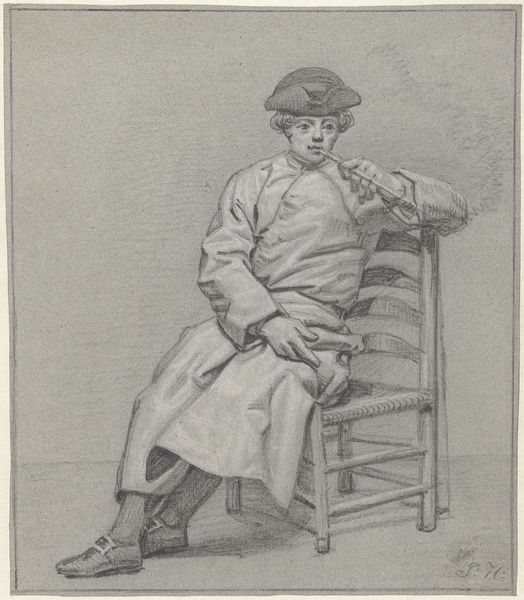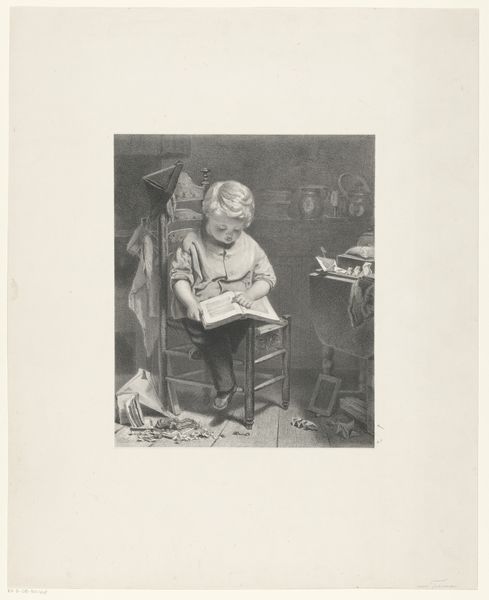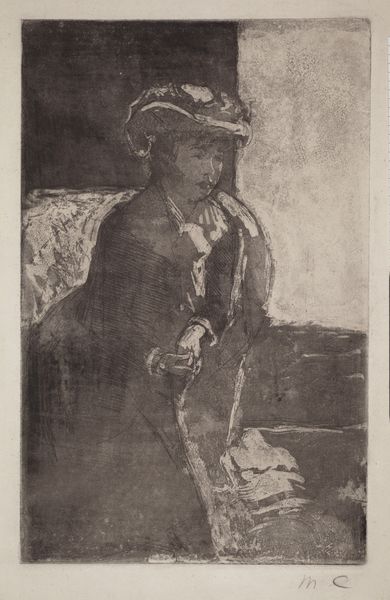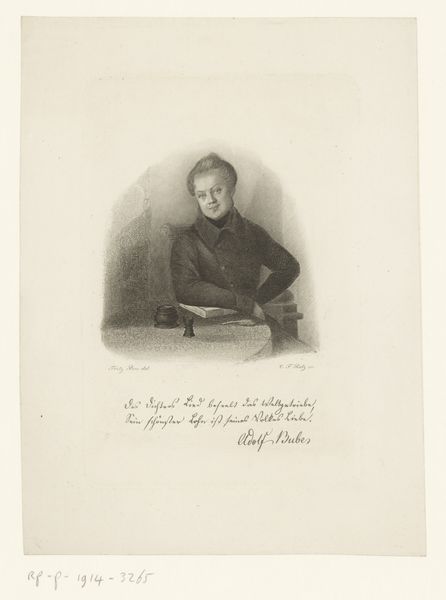
print, etching
#
portrait
# print
#
etching
#
genre-painting
#
modernism
#
realism
Dimensions: height 240 mm, width 191 mm
Copyright: Rijks Museum: Open Domain
Curator: I see an old woman preparing coffee; there's something deeply evocative about the texture, so earthy and intimate. Editor: Indeed. What we’re looking at is “Vrouw met een koffiemolen in de keuken,” or “Woman with a Coffee Grinder in the Kitchen,” by Fritz Hanno, an etching from 1890. Note how Hanno deploys a rather subtle play of light and shadow here—a critical compositional element—which ultimately contributes to the quiet dignity of the sitter and domestic space. Curator: Quiet is the word. She's got a steady look in her eye. I find the contrast between her stillness and the implicit motion of the grinder fascinating; I wonder if she finds grinding the beans meditative, even soothing. Almost like saying the rosary, marking the passage of time. Editor: Such conjectures lead to interpretative excess, wouldn't you agree? Better perhaps to consider how Hanno, by means of formal rigor—the structured arrangement of objects and figures, the limited palette— achieves an intriguing representation of genre and everyday life that subtly transcends its inherent banality. Curator: Fair enough! But what about the composition, though? Doesn’t the simple table setting contribute to the domestic mood—a still life within the genre-painting? And there’s this funny little crucifix. What’s that all about, then? Editor: Undoubtedly a marker of context—socio-cultural identity as it were. We should attend to the geometrical exactitude of the composition, as it invites the observer to consider structural elements and spatial relationships as vital meaning-generating devices, beyond mere surface appearances. Curator: But for goodness sake, let's be fair... I like the texture in her clothes; look at the fine detail and attention devoted to this aspect, almost palpable; or indeed her boots, giving us clues about her life beyond the interior. I think you may agree? Editor: Agreed, this attention is worth mentioning. Through line and shadow the artist does elicit a compelling, human quality from what may otherwise appear to some as mundane or routine activity. Curator: And in a brief moment, we see into her everyday world and recognize our shared humanity, wouldn't you say? It brings back so many vivid memories for me… Editor: Absolutely. And perhaps, the value of these works lies in precisely that shared sentimentality that can sometimes defy rigorous interpretation. Thank you.
Comments
No comments
Be the first to comment and join the conversation on the ultimate creative platform.
